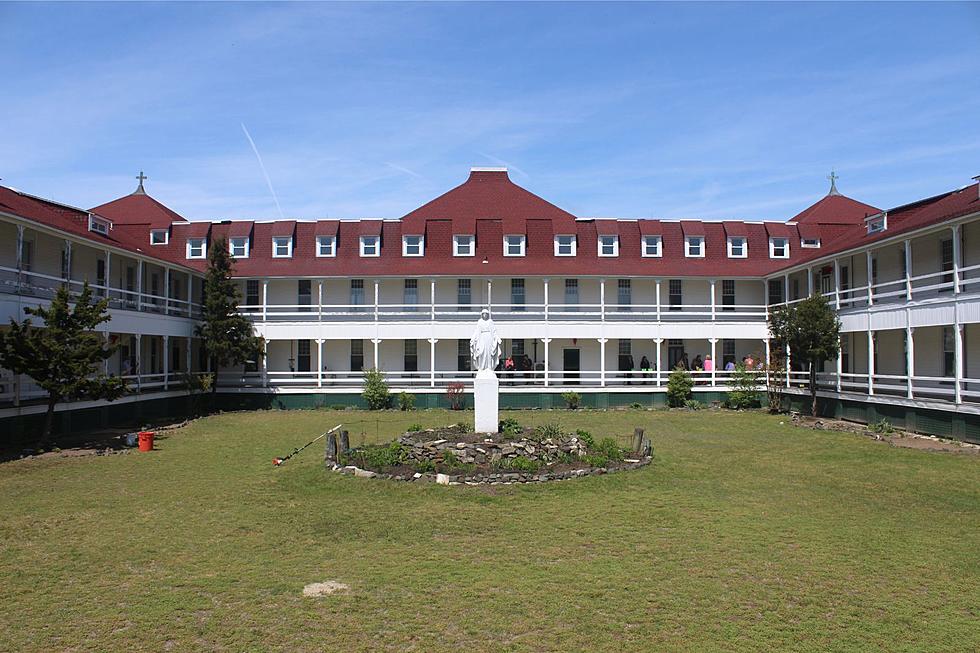
Historic building in Cape May, NJ is now a science center
🔬 The Cape May Point Science Center is dedicated to avian and marine life
🔬 The building once served as a convent for nuns
🔬 It also played an important role in World War II
About 200 steps from the Cape May Lighthouse is the Cape May Point Science Center, a 134-year-old building with a very, rich history.
What is the history of the Cape May Point Science Center?
The building, first built as a hotel between 1887 and 1889, and served as a hotel for about 10 years, said Bob Mullock, president and founder of the Cape May Point Science Center. At the end of the 1890s, things went downhill for hotels in Cape May City and Cape May Point as trains began taking passengers to Atlantic City instead.
Previously, visitors were coming to Cape May by way of steamboat.
The hotel was then purchased and headed by William Still, the father of the Underground Railroad. His parents escaped to New Jersey and needed a place to accommodate Black people, who also escaped but had difficulty finding housing. The hotel provided that for them. It stayed that way for another decade, Mullock said.
In 1909, the building was purchased by The Sisters of St. Joseph and the nuns stayed there until only a couple of years ago when the COVID-19 pandemic hit.
The sisters were planning to demolish the building. But Mullock said he and his family negotiated with them to take over the property and the building and turn it into the Cape May Point Science Center, an environmental science center that specializes in the education and research of avian and marine life.
“This made sense because 25,000 predatory birds fly over the building every year that’s in the middle of the Atlantic Flyway. On one side is the Delaware Bay with all its tremendous environmental marine life like horseshoe crabs, whales, and even dolphins,” Mullock said.
What is the Cape May Point Science Center’s mission?
The mission is to educate on the marine life that is all around the center.
Cape May County is the only county that has the bay on one side and the ocean on the other, Mullock explained. It has such a tremendous environmental location to begin with, that most residents recognize. But there are many tourists who pass through, who should be educated on the value of the environment here.
“We don’t just want to be a museum. We want to analyze the problems we see in the environment, and then we want to act on them,” Mullock said.
They act on them through projects including one involving horseshoe crabs. Mullock said they are working with The American Littoral Society to put transmitters on horseshoe crabs so their migration can be tracked.
In existence for 450 million years, he said these crabs are such a value to avian life, marine life, and human life, as well.
What does the science center offer to visitors?
When people come to the science center, they will learn the history of the building.
In World War II, this building acted as the protection for Philadelphia and the Philadelphia Navy Yard. Outside this building in the Atlantic Ocean and the Delaware Bay, were a number of German U Boats at the time. The German U Boats were sinking merchandise ships that were coming down Delaware Bay.
“So, we had in this building and around this building about 600 soldiers and sailors that were assigned to protect this part of the Delaware Bay and the Atlantic Ocean,” Mullock said.
Many U Boats were caught and sunk in the waters right behind the science center, he added.
Visitors to the science center will also be treated to a huge exhibit room, which shows videos of a variety of different subjects such as avian hawks flying, whales swimming, and more.
What other cool projects is the CMPSC involved in?
One involves transmitters on red-tail hawks. With these transmitters, researchers can see the hawks’ flights every 15 minutes in their location. From that information, they can see their actual migration routes, which a lot of times, is first-time information, Mullock said.
For example, there was an incredible story about a hawk that researchers nicknamed “Dave”, who started in the fall of 2022. That hawk was followed all the way across the bay to Virginia, Maryland, and Georgia. It stopped in Georgia for a few days. It turned out there was a hurricane that was brewing in the area, which eventually hit Fort Meyer, Florida.
Mullock said that hawk knew before even meteorologists knew, that this hurricane was coming. When the storm hit, “Dave” continued on through Florida. He went to Key West and then Cuba. It was in Cuba that the signal was lost. Six months went by and Mullock said researchers were sure the hawk didn’t survive.
But “Dave” pinged again in Key West. He then flew to Philadelphia and then to Canada where he still resides and will most likely stay there through the summer.
So, when visitors come to the science center, they can go on an active map and look at the variety of animals and birds that are fitted with transmitters, and follow their routes. It’s fascinating, Mullock said.
This is especially beneficial to scientists because not only can they see an animal’s migration, but they can see where it hunts, what it hunts, and the habitats they call home.
How can someone visit the science center?
The best way to visit the Cape May Point Science Center is to make an appointment for a tour on the website.
Learn the history, experience nature, enjoy the artwork and gardens, and understand how the environment plays an important role in the lives of South Jerseyans.


